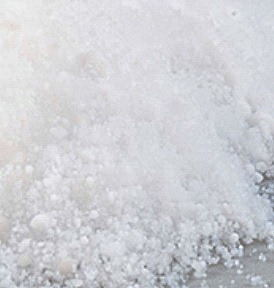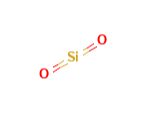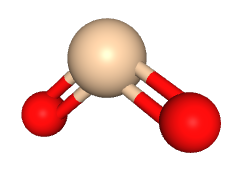| "Descrizione" by Ark90 (12432 pt) | 2023-Apr-20 12:15 |
Review Consensus: 10 Rating: 10 Number of users: 1
| Evaluation | N. Experts | Evaluation | N. Experts |
|---|---|---|---|
| 1 | 6 | ||
| 2 | 7 | ||
| 3 | 8 | ||
| 4 | 9 | ||
| 5 | 10 |
E551 (Silicon dioxide) is a very common component from which colloidal silica is obtained. Colloidal silica consists of tiny particles of amorphous silicon dioxide, the common silica, dispersed in a solution of water and are obtained by polymerisation of silica nuclei in a highly basic environment containing alkalis (pH value between 8.0 and 10.5). These particles are nanometric, ranging from 5 nm to 40 nm. Colloidal Silica consists of tiny particles of amorphous silicon dioxide, the common silica, dispersed in a water solution and are obtained by polymerising silica nuclei in a highly basic alkaline containing environment (pH value between 8.0 and 10.5). These particles are nanometric, ranging from 5 nm to 40 nm.
Silicon Dioxide or dioxosilane is a very common component.
It appears in the form of a white powder with a native particle size of 5nm to 40nm with functions of filling, thickening, strengthening and thixotropy of various materials.
In industry, it is used in the form of "Fumed silica" synthesized by pyrolysis method in which halogenated silanes (hydrolyzed chlorosilane) react with oxygen and hydrogen at high temperature.

This type of silica is used in many industries:
- Glass
- Rubber
- Optics
- Construction
- Food
- Medicine
Where it comes from
It is found in the earth's crust, in rocks in crystalline or amorphous form.
What it is used for and where
Food
In particular, in food can be used in foods, food supplements and other as anti-caking agent. Labelled as food additive thickener E551 in the European Food Additives List, its function is to avoid clumping in sauces, food supplements, cooking salt, dry foods. "Anti-caking agents" are substances that reduce the tendency of individual particles of a food product to adhere to each other.
Chillproofing agent in beer.
Pharmaceuticals
In the pharmaceutical industry, colloidal silica improves powder flow as it acts on breaking the interparticle force of silica particles adhering to the product surface. It is a thickening agent. Food thickeners are normally used to facilitate the ingestion of drugs in tablet form. Some thickeners directly influence the dissolution and disintegration of tablets and may even delay their dissolution.
It should not exceed 2% of the total weight of the product in which it is inserted.
Cosmetics
Thickening agent.
Other uses
- controls the rheology and thixotropy of binder systems, polymers, liquids, etc.
- reinforces HTV- and RTV- 2K silicone rubber
- absorbent and carrier in ink-jet printing coatings
- filling for dental materials
- low-temperature and high-temperature insulation as a carrier catalyst, with significant thermal insulation.
Safety
Regarding its toxicity, we must refer to nanoparticles, rather than milligrams (2) since its presence derives, mainly in the environment, from plastics, rubber, ceramics, paints, adhesives and others and it is also the product of coal combustion (3).
The potential risk of nanoparticles from air pollution has recently attracted a great deal of attention. Although the toxicology of nanoparticles has been extensively studied, little work has been reported on the combined effect of silicon dioxide (SiO2) nanoparticles and cold exposure at the cellular level.
The haze problem has a major impact on public health, and has been a widespread concern in recent years. Studies have shown that ultrafine particulate matter (PM 0.1 ), which is equivalent to nanoparticles, is harmful to humans. The increasing use of nanoparticles for a wide range of commercial, industrial, and biomedical applications has led to safety concerns (4).
In this study, the genotoxic effects of SiO2EN20(-) and SiO2EN100(-) were elucidated using four genotoxicity assays in standardized Good Laboratory Practice system protocols. Although the different exposure routes in this study may induce genotoxicity from SiO2EN20(-) and SiO2EN100(-) in different organs in in vivo systems, the data suggest that SiO2 are not genotoxic substances based on OECD test guidelines (5).
The results of this research confirmed that the addition of colloidal silica in microemulsion simultaneously loaded with vitamins C and E improved the skin bioavailability of the vitamins due to its dual influence on the delivery characteristics of the microemulsion and the properties of the skin (6).
General features:
- refractive index n20/D 1.46 (lit.)
- surface area 395 m2/g±25 m2/g
- density 2.3 lb/cu.ft at 25 °C (bulk density)(lit.)
 |  |
- Molecular Formula : SiO2 O2Si
- Molecular Weight : 60.08
- CAS : 112926-00-8 7631-86-9
- UNII ETJ7Z6XBU4
- EC Number 215-683-2
- DSSTox Substance ID DTXSID1029677 DTXSID4029852 DTXSID5041801 e molti altri
- MDL number MFCD00011232
- PubChem Substance ID 24866359
- InChI=1S/O2Si/c1-3-2
- InChI Key VYPSYNLAJGMNEJ-UHFFFAOYSA-N
- SMILES O=[Si]=O
- IUPAC dioxosilane
- ChEBI 30563
- MDL number MFCD00011232
- PubChem Substance ID 57654622
- ISC 0248 0807 0808 0809
- RTECS VV7325000 VV7330000 VV7335000
- NCI C29853
- RXCUI 9771 314826 1362874
Synonyms:
- Silicon dioxide
- Silicon dioxide amorphous
- Silicic anhydride
References_______________________________________________________________________
(1) Tran DT, Majerová D, Veselý M, Kulaviak L, Ruzicka MC, Zámostný P. On the mechanism of colloidal silica action to improve flow properties of pharmaceutical excipients. Int J Pharm. 2019 Feb 10;556:383-394. doi: 10.1016/j.ijpharm.2018.11.066.
(2) Petrick L, Rosenblat M, Paland N, Aviram M. Silicon dioxide nanoparticles increase macrophage atherogenicity: Stimulation of cellular cytotoxicity, oxidative stress, and triglycerides accumulation. Environ Toxicol. 2016 Jun;31(6):713-23. doi: 10.1002/tox.22084.
(3) Dai C, Huang Y, Zhou Y. Research progress about the relationship between nanoparticles silicon dioxide and lung cancer. Zhongguo Fei Ai Za Zhi. 2014 Oct 20;17(10):760-4. Chinese. doi: 10.3779/j.issn.1009-3419.2014.10.09.
Hassankhani R, Esmaeillou M, Tehrani AA, Nasirzadeh K, Khadir F, Maadi H. In vivo toxicity of orally administrated silicon dioxide nanoparticles in healthy adult mice. Environ Sci Pollut Res Int. 2015 Jan;22(2):1127-32. doi: 10.1007/s11356-014-3413-7.
(4) Zhang Y, Li X, Lin Y, Zhang L, Guo Z, Zhao D, Yang D. The combined effects of silicon dioxide nanoparticles and cold air exposure on the metabolism and inflammatory responses in white adipocytes. Toxicol Res (Camb). 2017 Jul 6;6(5):705-710. doi: 10.1039/c7tx00145b.
(5) Kwon JY, Kim HL, Lee JY, Ju YH, Kim JS, Kang SH, Kim YR, Lee JK, Jeong J, Kim MK, Maeng EH, Seo YR. Undetactable levels of genotoxicity of SiO2 nanoparticles in in vitro and in vivo tests. Int J Nanomedicine. 2014 Dec 15;9 Suppl 2(Suppl 2):173-81. doi: 10.2147/IJN.S57933. Erratum in: Int J Nanomedicine. 2015;10:4621.
(5) Kwon JY, Kim HL, Lee JY, Ju YH, Kim JS, Kang SH, Kim YR, Lee JK, Jeong J, Kim MK, Maeng EH, Seo YR. Undetactable levels of genotoxicity of SiO2 nanoparticles in in vitro and in vivo tests. Int J Nanomedicine. 2014 Dec 15;9 Suppl 2(Suppl 2):173-81. doi: 10.2147/IJN.S57933. Erratum in: Int J Nanomedicine. 2015;10:4621.
(6) Rozman B, Gosenca M, Gasperlin M, Padois K, Falson F. Dual influence of colloidal silica on skin deposition of vitamins C and E simultaneously incorporated in topical microemulsions. Drug Dev Ind Pharm. 2010 Jul;36(7):852-60. doi: 10.3109/03639040903541187.
| Evaluate |

